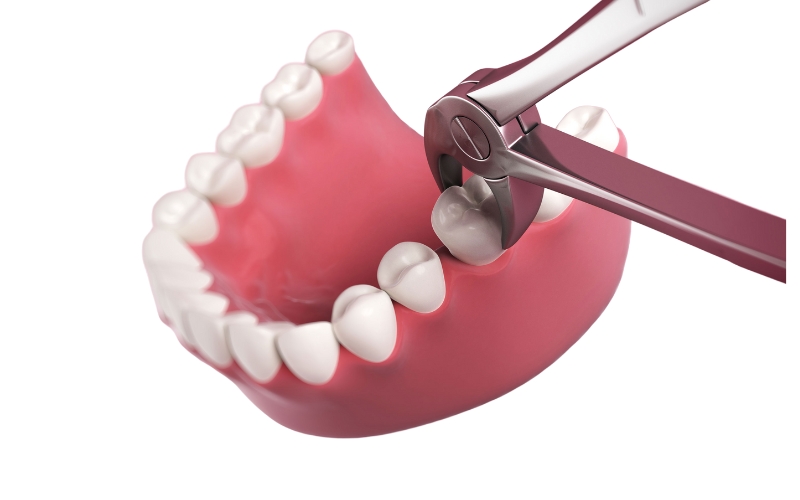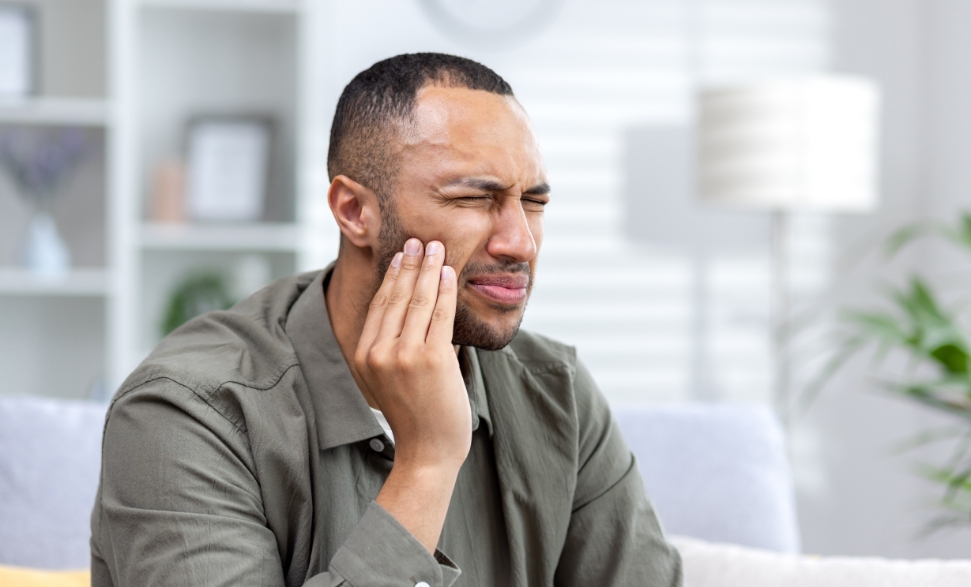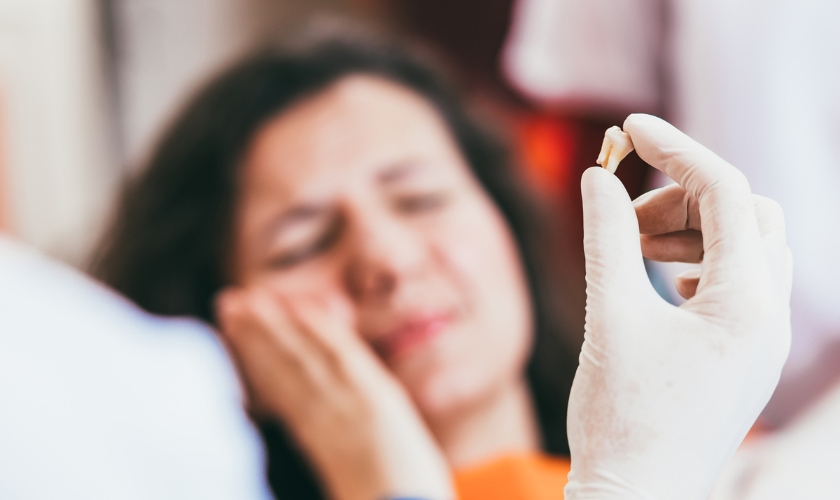
Tooth extraction is a common dental procedure. It is often necessary due to impacted wisdom teeth, severe decay, or overcrowding. While the process is routine, the recovery period is crucial for maintaining overall oral health. Proper care and attention post-extraction can prevent complications and promote faster healing. This blog offers practical tips and guidance to ensure a smooth recovery after a tooth extraction.
Understanding Tooth Extraction
Tooth extraction involves removing a tooth from its socket in the jawbone. This procedure is usually performed by a dentist or oral surgeon. Common reasons for tooth extraction include:
- Impacted Wisdom Teeth: These teeth fail to erupt properly, causing pain and infection.
- Severe Decay: Extensive tooth decay that cannot be treated with a filling or crown.
- Overcrowding: Removing teeth to create space for orthodontic treatment.
Types of Tooth Extractions
- Simple Extraction: Performed on visible teeth. Using an elevator tool, the dentist extracts the tooth and uses forceps to extract it.
- Surgical Extraction: Needed for teeth that are not easily accessible. This procedure involves making an incision in the gum and may require removing bone around the tooth or cutting the tooth into pieces.
What to Expect During the Procedure
- Local Anesthesia: The dentist administers local anesthesia to numb the area around the tooth.
- Procedure Steps: For a simple extraction, the dentist loosens the tooth and removes it. For a surgical extraction, an incision is made, and the tooth is removed in pieces if necessary.
- Post-Procedure Care: The dentist provides instructions for post-extraction care to ensure proper healing.
Immediate Post-Extraction Care
Proper care during the first 24 hours after a tooth extraction is crucial for a smooth recovery. Following the right steps can prevent complications and promote faster healing.
First 24 Hours
Importance of Resting
Resting is vital during the initial recovery period. Avoid any strenuous activities or heavy lifting. This helps your body focus on healing and prevents any unnecessary strain on the extraction site.
Using Gauze to Control Bleeding
Following the extraction, a gauze pad will be applied to the extraction site by your dentist. Gently bite into the gauze to aid in the formation of a blood clot—a necessary healing process. As directed by your dentist, or every 30 to 45 minutes, replace the gauze pad. If bleeding continues, use a fresh piece of gauze and apply gentle pressure.
Applying Ice Packs to Reduce Swelling
Swelling is a common response to tooth extraction. Use an ice pack on the outer part of your cheek close to the extraction site to lessen it. Use the ice pack for 10 to 20 minutes at a time, with 20-minute breaks in between. This may help numb the area and lessen swelling, which will help relieve some of the pain.
Medications and Pain Management
Over-the-Counter Pain Relievers
Pain is a normal part of the healing process after an extraction. Pain management can be aided by over-the-counter medications such as acetaminophen (Tylenol) or ibuprofen (Advil). Do not exceed the suggested dosage; instead, adhere to the dosage guidelines printed on the container. These medications alleviate pain, and help reduce inflammation.
Prescribed Medications
Stronger painkillers or antibiotics may be prescribed by your dentist, depending on the difficulty of the extraction. Antibiotics are essential if there is a risk of infection, especially in cases of surgical extractions.
Always follow your dentist’s instructions for taking these medications, including the dosage and duration. Never stop taking antibiotics midway, even if you feel better, as this can lead to antibiotic resistance and incomplete treatment of any potential infection.
Managing Side Effects
Some painkillers have adverse effects that include sleepiness and disturbed stomach. If you experience these, consult your dentist. They might adjust your medication or suggest ways to mitigate the side effects. Drinking plenty of water and eating a light snack before taking pain relievers can help prevent stomach issues.
Avoiding Other Medications
Aspirin thins the blood and increases bleeding; stay away from it. If you are on other medications, inform your dentist to ensure there are no adverse interactions with prescribed post-extraction drugs.
Dos and Don’ts for a Smooth Recovery
Dos
- Follow the Dentist’s Instructions: Adhere to all post-extraction care guidelines provided by your dentist.
- Maintain Oral Hygiene with Gentle Rinsing: In order to maintain the extraction site clean, gently rinse your mouth with salt water.
- Eat Soft Foods and Stay Hydrated: Choose soft foods and drink plenty of fluids to aid in healing.
Don’ts
- Avoid Smoking and Drinking Alcohol: These actions raise the possibility of problems and can slow the healing process.
- Refrain from Using Straws: Straws have the potential to move the clot and result in dry socket, a painful condition.
- Don’t Engage in Strenuous Activities: Avoid heavy lifting and intense exercise to prevent bleeding and swelling.
Diet Recommendations
Foods to Eat
- Soft Foods: Consume yogurt, applesauce, mashed potatoes, and soups. These meals are gentle on the extraction site and are easy to eat.
Foods to Avoid
- Hard, Crunchy, Spicy, and Acidic Foods: These can irritate the extraction site and impede healing.
Staying Hydrated
- Importance of Fluids: Drink plenty of water to stay hydrated.
- Recommended Drinks: Stick to water, herbal teas, and clear broths. Avoid caffeinated and carbonated beverages.
Signs of Complications
Common Signs to Watch For
- Persistent Pain or Swelling: If pain or swelling persists beyond a few days, it could indicate a problem.
- Excessive Bleeding: Continuous bleeding after the first 24 hours should be addressed.
- Signs of Infection: Infections can cause fever, pus, or a bad taste in your mouth.
When to Contact Your Dentist
- Seek Professional Help: Contact your dentist if you experience any of the above symptoms or have concerns about your recovery.
- Emergency Situations: Seek emergency medical treatment if you have extreme pain, uncontrollable bleeding, or other allergic reaction symptoms.
Long-Term Recovery Tips
Maintaining Oral Hygiene
Gentle Brushing Around the Extraction Site
In order to stop infections and encourage recovery, maintaining good dental hygiene is crucial. The day following your extraction, begin brushing your teeth lightly.
Avoid the extraction site and use a toothbrush with soft bristles to avoid moving the blood clot. Carefully clean your other teeth and gums, making sure not to disturb the healing area.
Using Antiseptic Mouthwash
An antiseptic mouthwash can help keep the extraction site clean and free from infection. Your dentist might recommend a specific mouthwash. If not, a mild saltwater rinse is an effective alternative.
Several times a day, especially after meals, gently rinse your mouth with a solution made of half a teaspoon salt and warm water. Avoid vigorous swishing, as this can disrupt the clot and delay healing.
Resuming Normal Activities
Gradually Reintroducing Regular Activities and Diet
As you start to feel better, you can gradually return to your normal activities. Listen to your body and avoid pushing yourself too hard. After a day or two, light activities can be resumed; however, avoid heavy lifting or intense exercise for at least a week, as these activities might exacerbate swelling and bleeding.
Dietary Adjustments
Reintroduce solid foods slowly into your diet. As you become more comfortable, progressively introduce more solid foods to your diet. Start with soft foods.
Eat nothing tough, crunchy, hot, or acidic until the extraction site has totally healed. These can irritate the area and impede healing. Drink lots of liquids as usual, but refrain from using straws as the suction may loosen the blood clot.
Follow-Up Appointments
Importance of Follow-Up Visits with the Dentist
It is essential to schedule follow-up visits to make sure the site of your extraction is healing appropriately. In addition to making sure the blood clot is intact and extracting any stitches that may be required, your dentist will look for any indications of infection.
During these appointments, any issues or problems that could have come up during the healing process can be addressed.
Monitoring Healing Progress
Your dentist will keep an eye on the healing process during these visits and provide you any extra instructions that are specific to your case. They can also advise on oral hygiene practices and diet modifications to support your recovery. Early action can stop more significant difficulties if any concerns are found.
Professional Cleaning
In order to get rid of any plaque or tartar accumulation that can hinder your healing, your dentist might also recommend a professional cleaning. In the course of your recuperation, maintaining good dental hygiene is crucial to avoiding any follow-up problems.
Maintaining a Healthy Lifestyle
Adopting a healthy lifestyle, including a balanced diet and regular exercise (once fully recovered), can support your overall well-being and aid in a faster recovery. Refrain from smoking and drinking in moderation since these behaviors might impede the healing process and raise the possibility of problems.
Recovering from a tooth extraction requires careful attention and adherence to post-operative care instructions. By following these tips, you can ensure a smooth and speedy recovery. Always listen to your dentist’s advice and take care of your oral health. If you have any concerns, reach out to your dental professional. Taking these steps will help you heal effectively and maintain a healthy smile.





